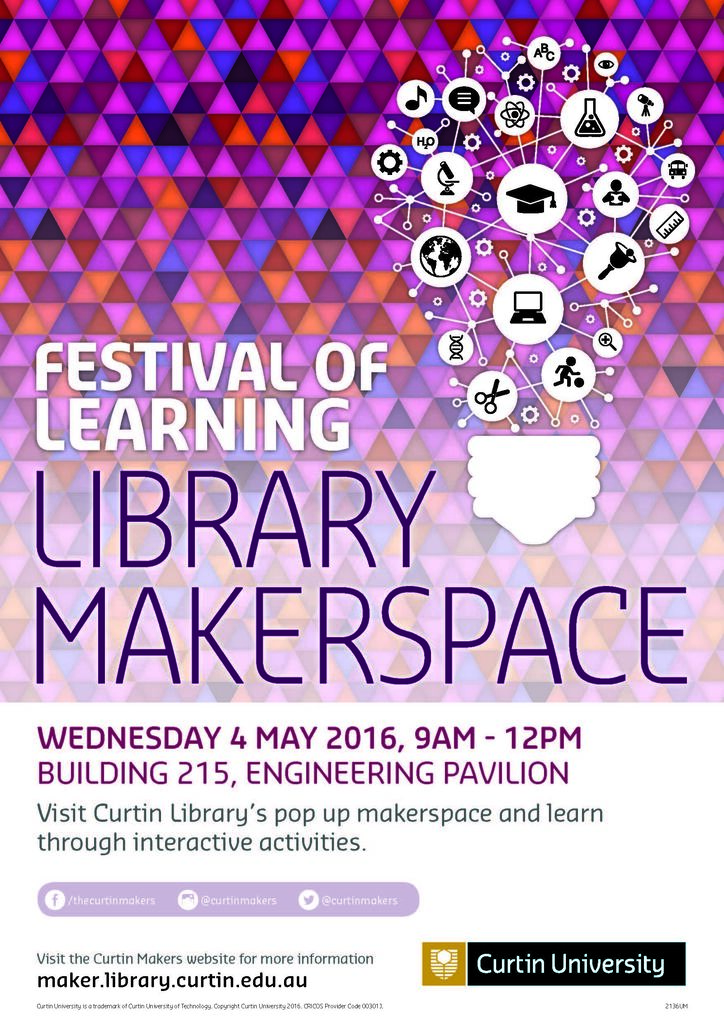Blog
Popping up again at the Festival of Learning
May 30th, 2016 by Marie Category: News and Events

The 2016 Festival of Learning was held this month across three days, commencing with an opening ceremony in the Engineering Pavilion. The Curtin Library Makerspace had the opportunity to be involved in the Tech Tasters aspect of this opening event.
The aim of the Festival was to immerse and guide staff and students by exhibiting examples of excellence at Curtin; commemorating accomplishments in the learning, teaching and student space; as well as sharing future technologies and teaching practices for the global classroom.
With the opening event being attended by some 80 staff and students, our pop-up collaborative makerspace aimed to demonstrate how various technologies and equipment can be incorporated into learning and teaching. The concept of the makerspace encourages the idea of learning by doing (and making!).
On our stall, we had the ever popular fruit salad piano, the MaKey MaKey – tech designed to turn everyday objects into an external keyboard. Another favourite was littleBits, the easy-to-use (magnetic) electronic building blocks. Both of these simple yet interactive invention kits enable creative thinking and encourage imagination, experimentation, and prototyping.
Also on show was our WaterColorBot, a collaborative invention from Super Awesome Sylvia and Evil Mad Scientist. It is an art robot that moves a paintbrush to paint your digital artwork (or code), using watercolour paints. The inventions impact is best described in this quote taken from watercolorbot.com:
“Beyond simple fun, we think that the WaterColorBot has enormous potential for STEM and STEAM education, especially as a way to get young people engaged with hands-on technology and robotics. We are particularly interested finding ways to inspire young women to pursue careers in science and technology. We cannot imagine any better way to do so, than starting with a robot co-designed by a 12 year old girl.”
Our Structure Sensor was used to conduct rapid 3D scanning of objects and people. This scanner additionally has the capacity to capture indoor mapping, positional tracking, and augmented reality. Using the plugins and sample code provided, captures can be easily integrated with 3D rendering and video game engines like Unity to create mixed reality experiences.
Following on from this activity, the absolute showstopper for us was the VR demo of the HTC Vive via our collaboration with Dominic Manley and Anton Ball (both Developers from Curtin Information Technology Services). This hands-on showcase has been the catalyst for further exploration and discussion around virtual (plus augmented and mixed) reality-enhanced teaching and learning, as well as looking at digital literacies around this space.